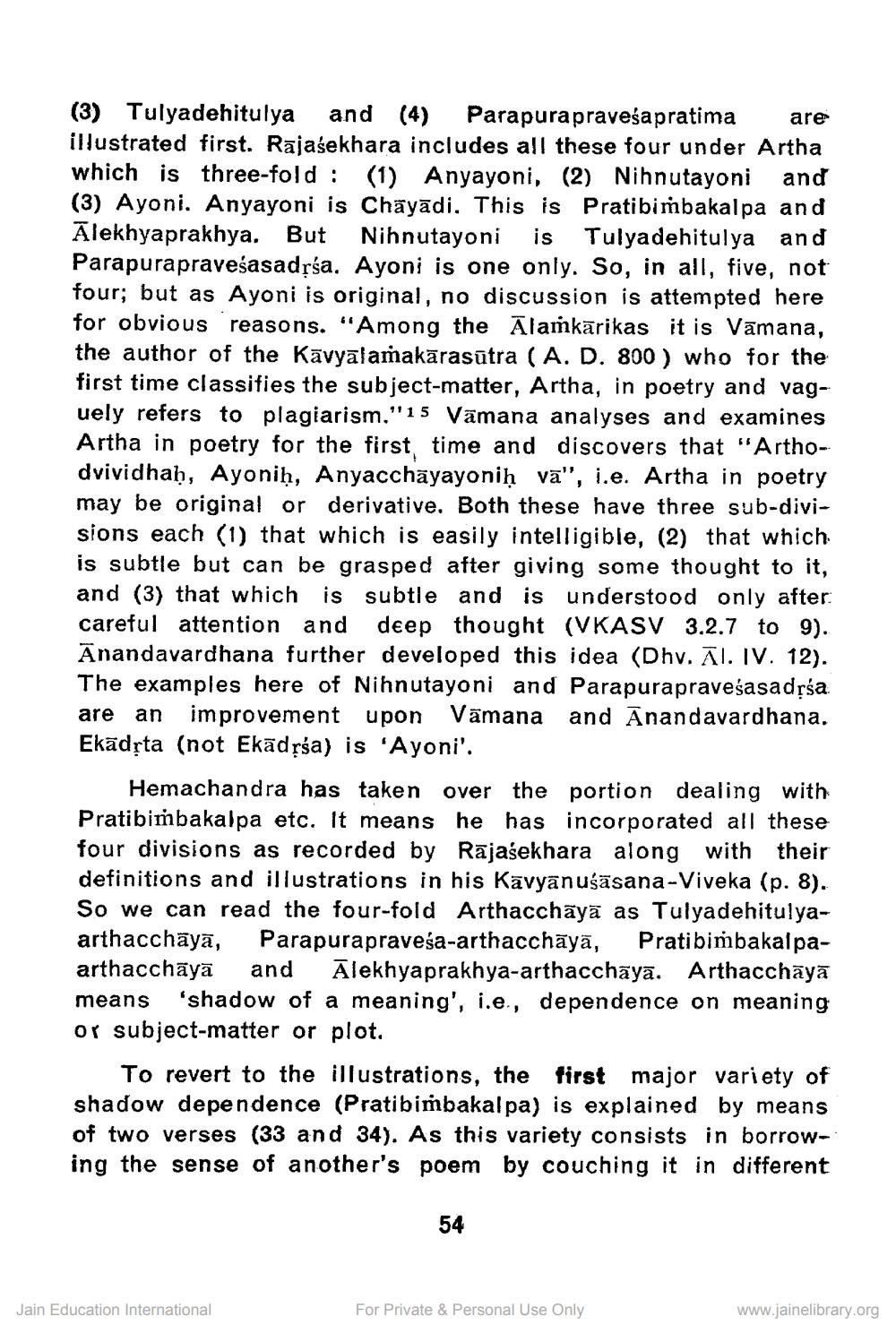________________
are
(3) Tulyadehitulya and (4) Parapurapravesapratima illustrated first. Rajasekhara includes all these four under Artha which is three-fold (1) Anyayoni, (2) Nihnutayoni and (3) Ayoni. Anyayoni is Chayadi. This is Pratibimbakalpa and Alekhyaprakhya. But Nihnutayoni is Tulyadehitulya and Parapurapraveśasadṛśa. Ayoni is one only. So, in all, five, not four; but as Ayoni is original, no discussion is attempted here for obvious reasons. "Among the Alamkarikas it is Vamana, the author of the Kavyalamakārasūtra (A. D. 800) who for the first time classifies the subject-matter, Artha, in poetry and vaguely refers to plagiarism."15 Vamana analyses and examines Artha in poetry for the first, time and discovers that "Arthodvividhaḥ, Ayoniḥ, Anyacchayayoniḥ va", i.e. Artha in poetry may be original or derivative. Both these have three sub-divisions each (1) that which is easily intelligible, (2) that which is subtle but can be grasped after giving some thought to it, and (3) that which is subtle and is understood only after careful attention and deep thought (VKASV 3.2.7 to 9). Anandavardhana further developed this idea (Dhv. Al. IV. 12). The examples here of Nihnutayoni and Parapurapraveśasadṛśa are an improvement upon Vamana and Anandavardhana. Ekādṛta (not Ekadṛśa) is 'Ayoni'.
Hemachandra has taken over the portion dealing with Pratibimbakalpa etc. It means he has incorporated all these four divisions as recorded by Rajasekhara along with their definitions and illustrations in his Kāvyānuśāsana-Viveka (p. 8). So we can read the four-fold Arthacchaya as Tulyadehitulyaarthacchāyā, Parapurapraveśa-arthacchāyā, Pratibimbakalpaarthacchāyā and Alekhyaprakhya-arthacchaya. Arthacchāyā means 'shadow of a meaning', i.e., dependence on meaning or subject-matter or plot.
To revert to the illustrations, the first major variety of shadow dependence (Pratibimbakal pa) is explained by means of two verses (33 and 34). As this variety consists in borrowing the sense of another's poem by couching it in different
Jain Education International
54
For Private & Personal Use Only
www.jainelibrary.org




